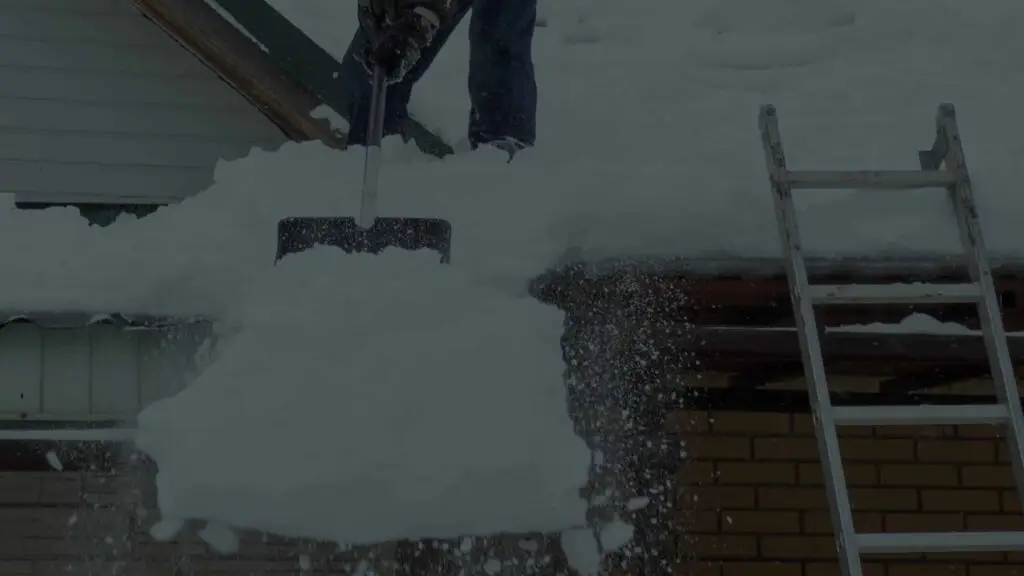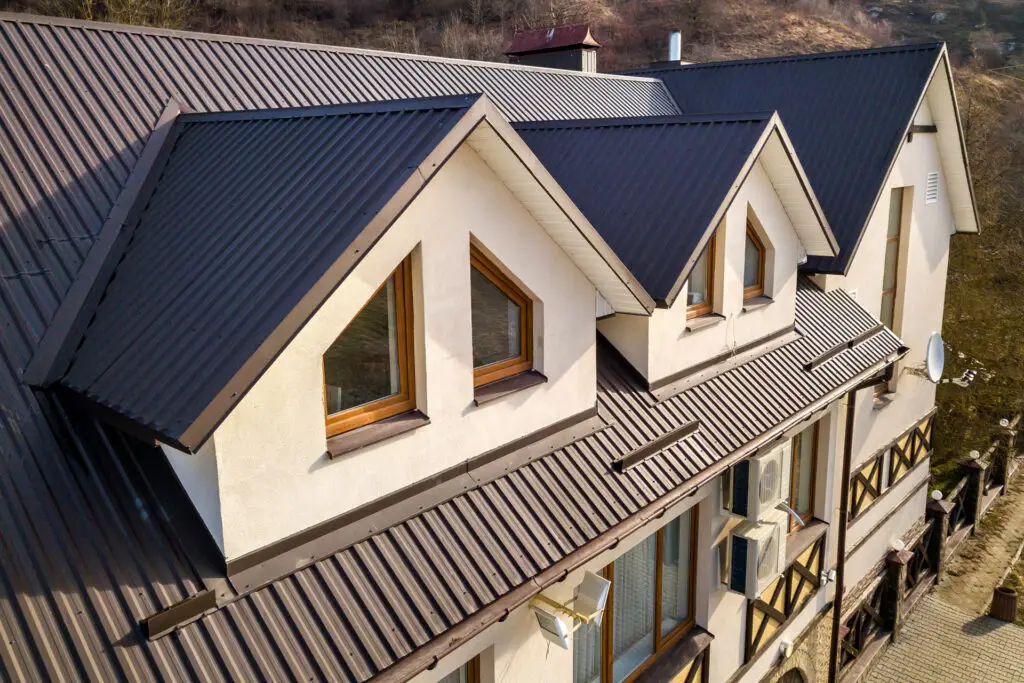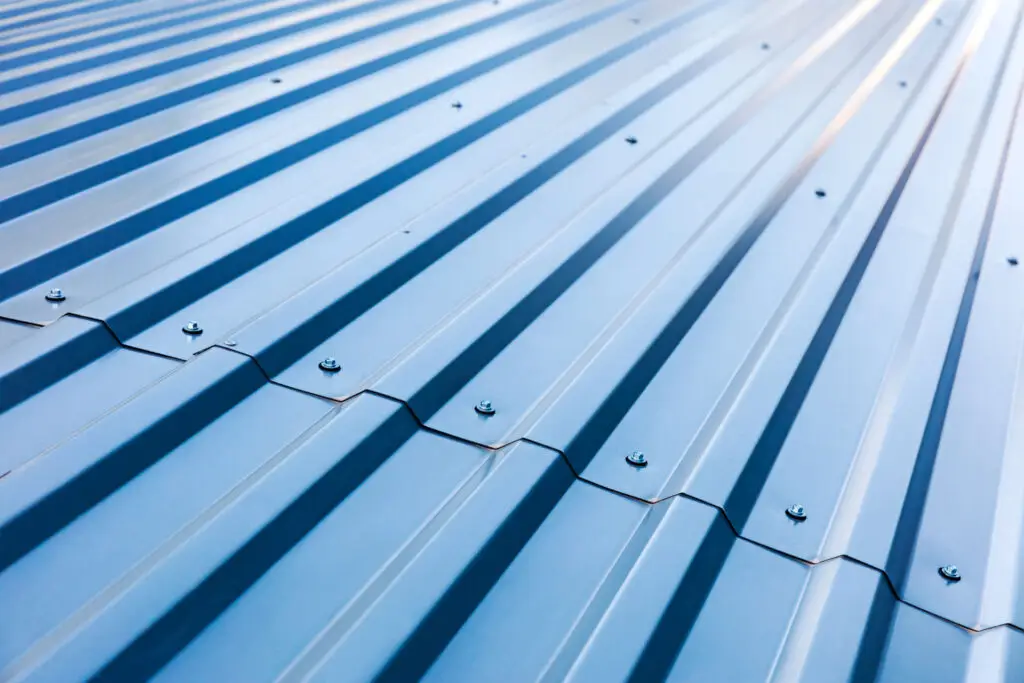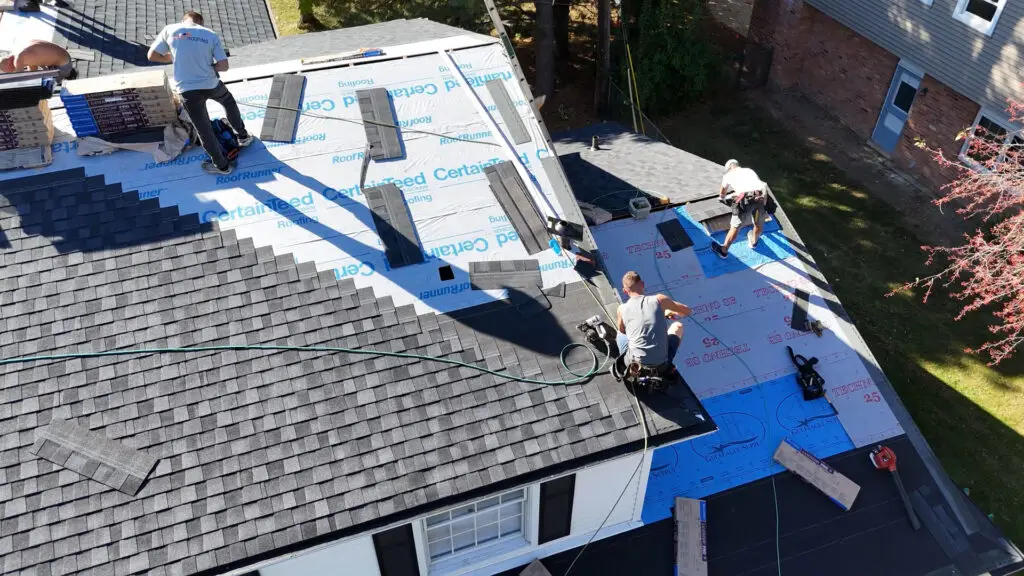Michigan winters are no joke. Heavy snow, ice buildup, and freezing temperatures can create beautiful scenery, but also a dangerous situation for your roof. When snow accumulates too quickly or in large amounts, it can add thousands of pounds of pressure to your roof system.
That’s why roof snow removal isn’t just a seasonal chore–it’s a critical step in winter roof care. For many homeowners, especially those with low-pitched or aging roofs, removing snow can mean the difference between peace of mind and costly damage.
At BCM Roofing, we’ve seen firsthand how winter weather affects Michigan homes—and how proactive removal and protection strategies, including the use of roof snow guards, can make all the difference. Repairing roof damage can be costly, and its worth the small investment to keep it in proper working order.
Why Roof Snow Removal Matters
While snow-covered rooftops can look picturesque, excess weight and moisture can cause serious issues, especially if your roof is older, has poor drainage, or isn’t properly insulated. Removing snow from your roof is a preventative measure that protects against several costly risks:
- Ice dam formation
- Leaking roofs and water intrusion
- Damaged shingles and underlayment
- Collapsed roof structures
- Gutter and soffit damage from falling snow and ice
The bottom line: routine roof snow removal during winter isn’t just about convenience—it’s about protecting your home.
How Much Snow Is Too Much?
There’s no one-size-fits-all answer, but as a general rule, more than 6 inches of heavy, wet snow should prompt action. The weight of snow varies depending on density:
| Snow Type | Weight per Cubic Foot |
| Fresh, dry snow | 7-15 lbs |
| Wet, heavy snow | 20-40 lbs |
| Compacted snow/ice | 40+ lbs |
If snow is drifting or uneven, some areas may be overloaded while others remain light. Homes with low-pitched roofs or older framing systems are particularly vulnerable.
Signs Your Roof Needs Snow Removal
- Creaking or popping sounds in your attic or ceilings
- Sagging or bowing areas of the roof
- Water stains on ceilings or walls
- Ice forming at the edge of your roof (ice dams)
- Difficulty opening doors or windows (pressure from weight)
If you’re noticing any of the above, it’s best to act quickly and consult a professional before the issue escalates.
DIY Roof Snow Removal: Is It Safe?
Many homeowners ask if they can remove roof snow themselves. While DIY roof snow removal is possible, safety should always come first. Climbing onto a snow-covered roof is extremely risky, especially during freezing temperatures or after a storm.
If you decide to tackle it yourself, use these safety tips:
Roof Snow Removal Tips for Homeowners
- Use a Roof Rake, Not a Shovel – A roof rake with a telescoping handle allows you to remove snow while standing on the ground. Never use a metal shovel or climb on the roof unless you are trained and properly secured.
- Start from the Edge and Work Inward – Pull snow down the slope—never upward, which can damage shingles.
- Don’t Remove All the Snow – Leave 1-2 inches on the surface to avoid damaging shingles.
- Watch for Falling Ice and Snow – Always stand to the side and use caution when dislodging large snow piles.
- Never Work Alone – If you must go up on a roof, ensure someone is there to monitor you or call for help.
Why Hiring Professional Roof Snow Removal Services Makes Sense
While some homeowners choose the DIY route, hiring a professional offers several distinct advantages, especially when winter weather makes rooftops treacherous.
Safety First
Snow and ice make roofs extremely slippery, and falls are one of the leading causes of winter injuries. Professional crews are trained in proper safety procedures, use harnesses and ladders correctly, and know how to navigate snow-covered surfaces safely.
Better Tools and Techniques
Professionals use specialized equipment such as roof rakes with soft edges, steamers (in some cases), and shovels designed to minimize shingle damage. They also know how much snow should be removed without stripping off protective layers.
Faster and More Thorough
Experienced teams can complete the job efficiently, reducing the amount of time your roof is under pressure. They will also spot potential issues like ice dams, cracked flashing, or loose shingles and can recommend solutions.
Peace of Mind
Perhaps the biggest benefit is knowing the job is done right. When snow is removed properly, it reduces your chances of emergency repairs later in the season.

The Role of Roof Snow Guards
One of the smartest ways to reduce risk from snow buildup is to install roof snow guards.
These simple devices are attached to your roof and designed to hold snow in place, allowing it to melt slowly and evenly rather than slide off in dangerous sheets.
Benefits of Roof Snow Guards
- Prevent sudden snow slides
- Reduce gutter and siding damage
- Minimize ice dam formation
- Protect landscaping and walkways below
- Add safety around entrances and driveways
They are especially helpful for metal roofs, where snow can slide off in large sheets. Snow guards come in various styles and materials to match your roofing system, and they can be retrofitted on existing roofs or included during replacement.
Are Roof Snow Guards Right for You?
Not every home needs snow guards, but they’re a wise choice if:
- You have a steep metal roof
- Snow commonly builds up over entryways, decks, or walkways
- You’ve experienced siding, gutter, or landscaping damage from falling snow
- You live in an area of frequent heavy snowfall, like northern Michigan
Consulting with a professional roofer can help determine if roof snow guards are a smart investment for your home.
Installation Considerations
Snow guards should always be installed by a roofing professional to ensure proper placement and attachment. Poorly placed guards can cause snow to accumulate in unsafe areas or even damage shingles if installed incorrectly.
Lifespan and Maintenance
Most snow guards are made from durable materials like polycarbonate or metal and can last decades when installed properly. Occasional inspections during routine roof maintenance are recommended to ensure they remain secure.
Winter Roof Maintenance Checklist
- Inspect the attic and ceilings for water stains
- Check for signs of ice dams along eaves
- Use a roof rake after heavy snow
- Monitor weight, especially during back-to-back storms
- Schedule a professional snow removal service when in doubt
Stay Ahead of Snow with the Right Strategy
When it comes to roof snow removal, being proactive is key. Whether you’re using a roof rake after each storm or considering roof snow guards as a long-term solution, your efforts will go a long way in protecting your home and avoiding costly repairs.
BCM Roofing is here to help—offering Michigan homeowners over 20 years of expertise in winter roof care, snow removal, and custom guard installation. If you’re unsure where to start, we’re happy to provide honest advice and a no-obligation estimate.
The Hidden Dangers of Ignoring Roof Snow Removal
While it’s easy to think, “I’ll wait until the snow melts,” failing to remove snow from your roof can have consequences that go far beyond cosmetic issues. Snow adds immense weight, and as temperatures fluctuate, melting and refreezing cycles can quickly turn fluffy snow into dense, heavy ice.
Here’s what’s at risk when snow is left too long:
1. Roof Collapse Risk
Even structurally sound roofs have limits. If heavy snow is left to accumulate, especially when combined with ice, it can create dangerous stress on rafters and supports. Older roofs and those with shallow slopes are even more susceptible to structural failure.
2. Water Damage and Interior Leaks
When snow melts and refreezes in cycles, water often gets trapped underneath the snowpack. This moisture can work its way under shingles and flashing, causing roof leaks that may damage insulation, drywall, ceilings, and flooring.
3. Mold and Mildew Issues
Moisture that enters your attic and insulation creates the perfect environment for mold growth, which can affect indoor air quality and lead to costly remediation.
4. Gutter and Downspout Damage
Heavy snow and ice can pull gutters away from the house, damaging fascia boards and leaving your home vulnerable to future water problems.
In short, roof snow removal isn’t just about protecting shingles — it’s about preventing major home repairs.
FAQs About Roof Snow Removal
How often should I remove snow from my roof?
After every heavy storm, especially if the snow is wet and deep (6+ inches). Frequent light removal is better than waiting for it to build up.
Can roof snow guards be installed on asphalt shingles?
Yes—while they’re most commonly used on metal roofs, there are options for shingle roofs as well.
Will removing snow damage my roof?
Not if done properly. Using a rake and leaving a small layer helps avoid shingle damage. Never use metal tools or scrape down to the roof deck.
Can snow cause a roof to collapse?
Yes, particularly if your roof is older or weakened. Ice and snow can weigh thousands of pounds on large roofs.
Should I install snow guards myself?
We recommend working with a roofing professional to ensure proper placement, secure installation, and compatibility with your roofing system.
Can roof snow removal damage shingles?
Not if done correctly. Removing too much snow or using metal tools can cause damage, but professional roof snow removal focuses on clearing heavy buildup while leaving a thin layer to protect shingles.
What happens if I wait too long to remove snow from my roof?
Waiting increases the risk of ice dams, leaks, structural damage, and costly repairs. The sooner you act after heavy snowfall, the better.


